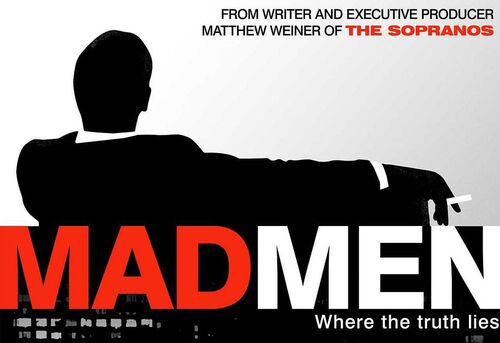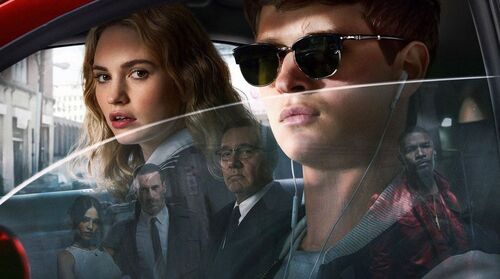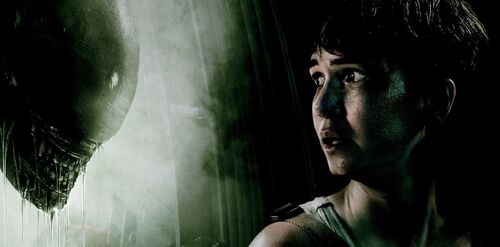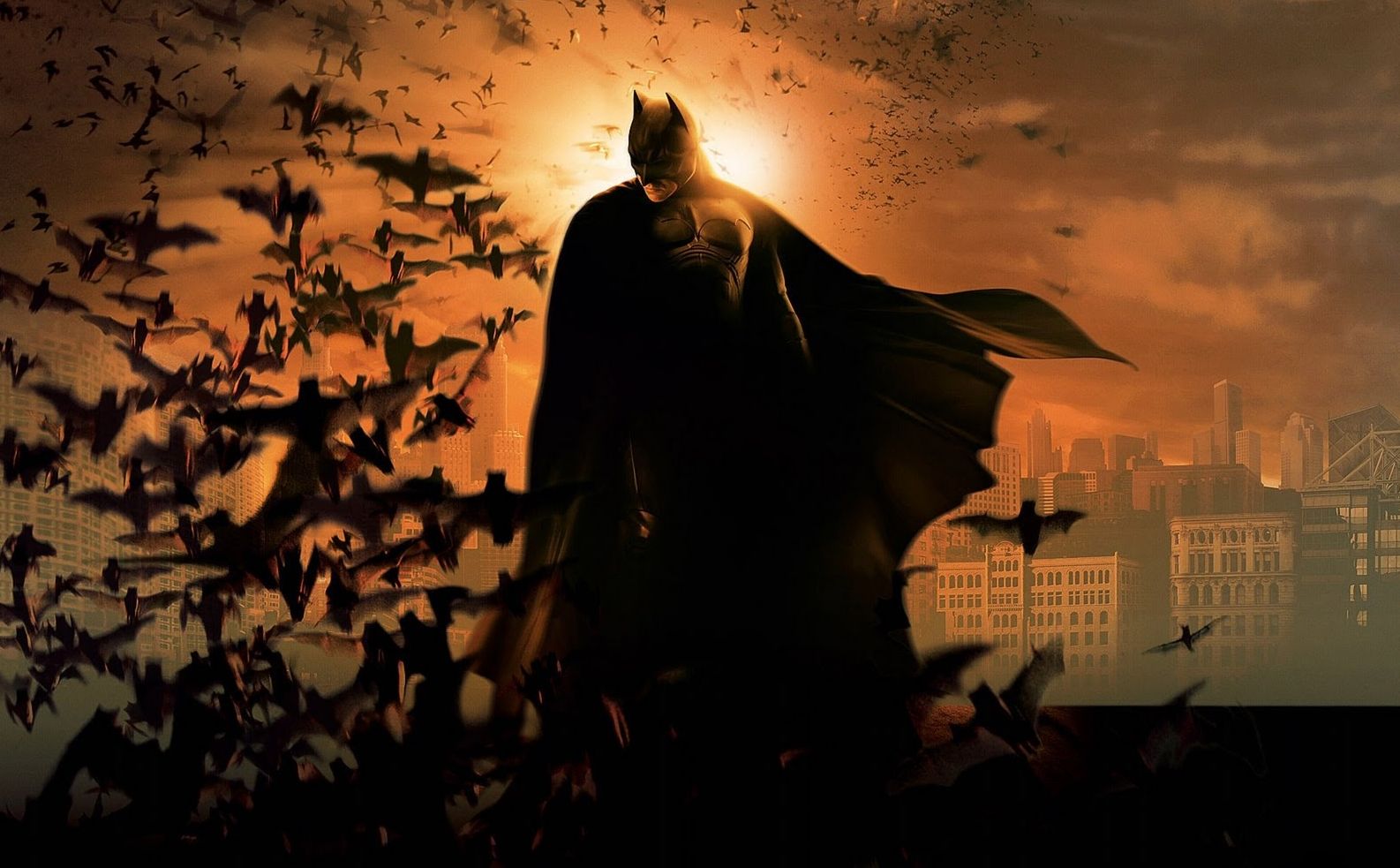
The Dark Knight Trilogy (2005-2012) Review
 Christopher Nolan was an independent filmmaker with one semi-budget studio film to his name when he made his pitch to take on the Batman reboot at Warner Bros. He’d made his previous film, Insomnia, for the studio, and won the job on Batman Begins in fifteen minutes.
Christopher Nolan was an independent filmmaker with one semi-budget studio film to his name when he made his pitch to take on the Batman reboot at Warner Bros. He’d made his previous film, Insomnia, for the studio, and won the job on Batman Begins in fifteen minutes.
The creation of his Dark Knight Trilogy is something of an anomaly by today’s standard. In fact, when it first began, all the way back prior to its 2005 release, reboots were not as common practice as they are now. Nolan, teamed with writer David S. Goyer, set out to craft his take on the Batman character, one that would deviate from what had come before, and one that would explore untold areas of Bruce Wayne’s origin. The resulting film didn’t feature the iconic caped hero until over an hour into its run-time, and when it did introduce him it resembled a horror sequence more-so than something that belonged in a superhero film.
Nolan filled his superhero trilogy with an ensemble of stars; Michael Caine, Morgan Freeman, Gary Oldman, to name a few, play Bruce Wayne’s allies in his war on crime. Bruce himself was cast from an extensive list, and Christian Bale (coming off of The Machinist, in which he weighed next to nothing) actually put on too much weight when he took Nolan too seriously about getting as big as he possibly could. Later films would see actors like Joseph Gordon-Levitt, Aaron Eckhart, and Anne Hathaway come on-board, expanding Nolan’s list of go-to-actors and boosting the trilogy's talented credentials. The star power was more than matched by the villains, played by an array of performers such as Tom Hardy, Marion Cotillard, Liam Neeson, Heath Ledger of course, and Cillian Murphy; Murphy had initially tested for Batman. While Nolan and his team didn’t see him as a fit for their protagonist, they couldn’t pass up the obvious talent Murphy offered, and gave him the role of Jonathan Crane (or, the Scarecrow).
Nolan dubbed the style of his films as a “cinematic reality,” accepting of the fact that it was a heightened, unrealistic concept but one that he wanted to entrench into a contemporary, believable setting. The scale of each film seemed to rise with each subsequent entry, as evidenced in part by the ever increasing runtimes. But despite how enormous the films got – and there is a sense that Nolan benefited from the time the films took to make, having filmed unrelated pictures in between – his emphasis on visual bravado and practical effects created an experience unlike any other. Forgoing the allure (or lack of, in his case) of 3D filmmaking, Nolan instead committed to IMAX, and he avoided the use of visual effects where possible to make for a more authentic experience. In The Fire Rises, a documentary on the creation of the trilogy, he estimates Rises as having around 500 shots of CGI, where a modern blockbuster film might feature close to or over 2,000. Nolan explained that his rule of thumb, so to speak, involves balancing special effects with practical. If a scene can close on a practical effect, then it sells the audience more convincingly on that particular sequence. The punchline has to be authentic.
“It felt like a very long time since I’d seen the tone of movie that had defined a blockbuster from the years when I was a kid,” so said Nolan, and it seems that Begins owes a lot of its signature aesthetic to film’s like Ridley Scott’s Blade Runner, with its rain-drenched and smoky Gotham City creating a kind of nightmarish world that looks completely untied to the sequels. The Dark Knight and Rises, by comparison, do not share the same sense of identity as Begins, but the choices made with them are perfectly befitting of the style of each picture. Each film is shot in a different city, purposefully, because Nolan viewed the city in a different light for each film. “Gotham has always been multiple cities to us in the way that we shot it,” he said in an interview. “The look of it has evolved in the three films; it’s changed, depending on what we wanted to emphasize." That might be jarring particularly for viewers native to those cities.
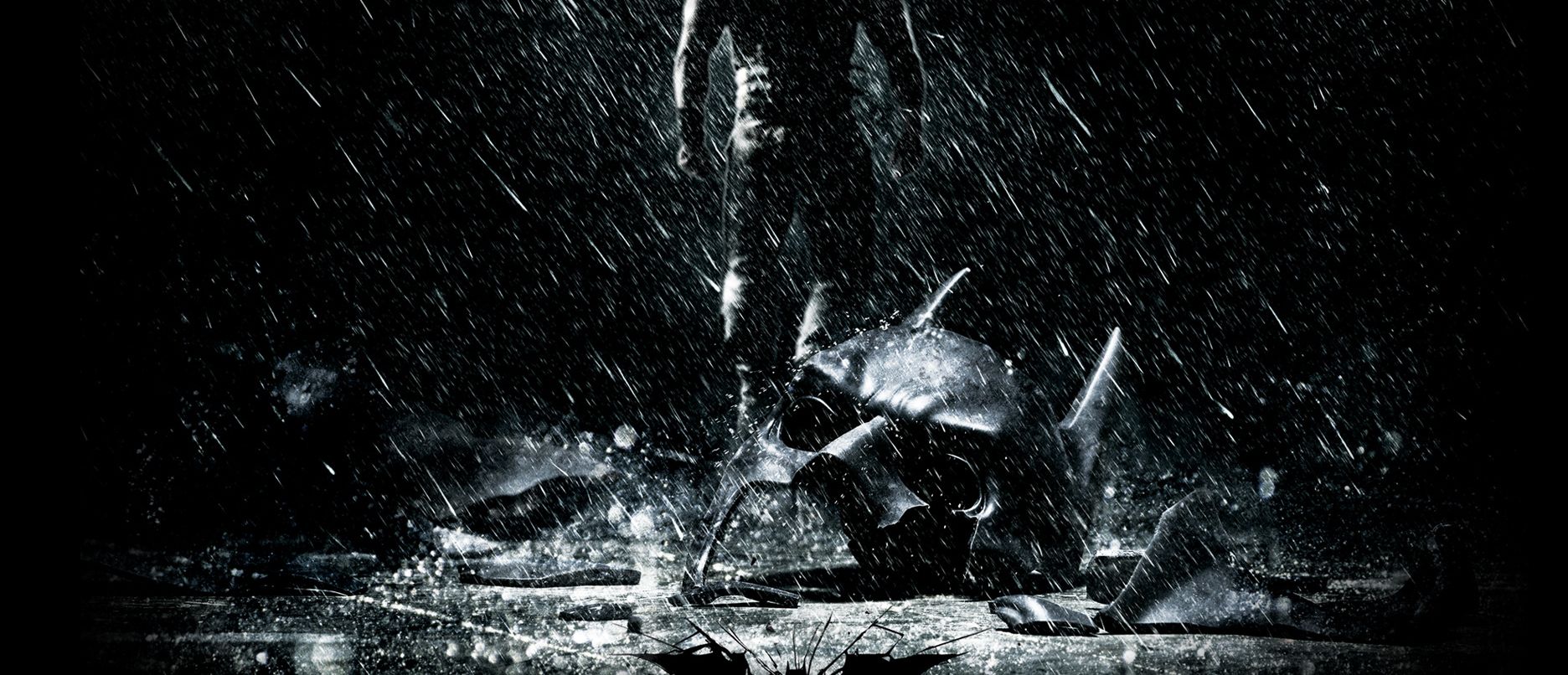
Never did Nolan and his partners consider a sequel during the making of any one film, in an attempt to make the best Batman film possible with each project. Surprisingly, while it makes for three films with separate tones and themes, as a whole the trilogy feels a natural piece. Rises, in particular, while making use of the consequences from the lies conjured at the end of The Dark Knight, ties more closely to Batman Begins. It reintroduces the League of Shadows, and in doing so emphasizes Bruce’s own journey, something that’s far more integral to Nolan and co.’s vision than telling endless tales of the caped crusader.
Batman Begins feels far closer to its comrades in the field of superhero fiction, as an origin story that lays the groundwork for its sequels. For this, it's the less-talked-about film, and perhaps the least rich. The Dark Knight Rises, meanwhile, fails to match the quality of The Dark Knight. While it seems that facets of the film, such as its villain, were implemented to directly contrast with the style of villain in its predecessor, it also seems committed to trying to one-up sequences like the famous prologue bank robbery. All three films seem riddled with logical missteps, or rather a briskness to move from one sequence to another without time to contextualize certain aspects of the narrative. The most glaring example of this is Bruce Wayne’s return to Gotham in Rises, despite the exits having been blocked off. There’s also the out-of-nowhere birthday party for Bruce in Begins, apparently organized while he was passed out on a lethal drug or prior to, but never mentioned at all.
These criticisms are mostly minor, though. Bruce Wayne is given a complete and satisfying arc, something that’s more-or-less unheard of across any medium for the character, but especially in film. He can be looked back on in Begins as rather ambitious but naive to the actual affect that Batman would have on the city, and we come around to Rises, in which he accepts the Batman’s limited role but manages to utilize his alter ego to create profound change both for Gotham and for himself. In The Dark Knight, both Bruce and Batman play rather passive roles, backseat to the Joker’s chaotic hold on the city. Though, that can be said of every supporting character, too, in the middle chapter. While Gordon’s family is not given very much time in the story, the script uses his wife and son as reason for Gordon to fake his own death, an attempt at protecting them. When they’re taken hostage at the end by Harvey Dent, it shows the futility of Gordon’s efforts.
These aren’t always deftly-handled scenarios. Harvey Dent is not subtle in alerting the audience to his fate when, early on, he states that “you either die a hero or live long enough to see yourself become the villain.” But his fate is nevertheless shocking, because it comes as a result of Batman’s failure. Superheroes, of all characters, are expected to win their battles, so “what happens if he doesn’t?” ponders writer Jonathan Nolan. The Dark Knight embraces consequences as the result of choices made by characters, and it bleeds into Rises. Batman is given a choice; go after Harvey Dent, or Rachel, and only one of them can survive the Joker’s trap. Later on, two ferries, one full of prisoners and the other full of “sweet, innocent civilians,” head out to sea. The Joker gives them all a choice. With their boats rigged with explosives, it’s up to them to decide whether to detonate the other ship’s bombs, or wait until midnight and suffer the same fate as the other regardless.
The ultimate decision at the close of The Dark Knight provides the dramatic weight for The Dark Knight Rises. Batman has since retired and Gotham enters peace time as a result of the lie conjured at the end of the previous film. When Batman returns, Bruce Wayne seems ignorant of his own limits. When he’s cast into the prison dubbed the “worst hell on Earth,” it’s an on-the-nose metaphorical well reminiscent of the same one Bruce fell down as a boy. But him conquering the prison and returning to Gotham is a triumphant and character defining moment, one that propels him toward the conclusion to his arc. Minor arcs within the grander one for characters such as Selina Kyle and John Blake start to bloat the narrative of Rises, as if the film is trying to tackle too much in the wake of The Dark Knight’s expert handling of its various threads.
However, both Selina and Blake are given complete journeys. Selina’s decision to hang up her uniform in order to live a quieter life (presumably) abroad with Bruce is almost too clean, but Blake sees the flaws of armed authority and turns his back on it. That, in the end, if conveniently, leads him to Bruce Wayne’s cave, and the character rises up to suggest a future for the Batman that we’ll never see. The supporting characters infused into Rises results in a film that isn’t quite so calculated as The Dark Knight, but Nolan’s technical and narrative talent is undeniable as he weaves all of his loose ends together. If anything falters, outside of those logical shortcuts mentioned earlier, it’s the action sequences throughout the trilogy.
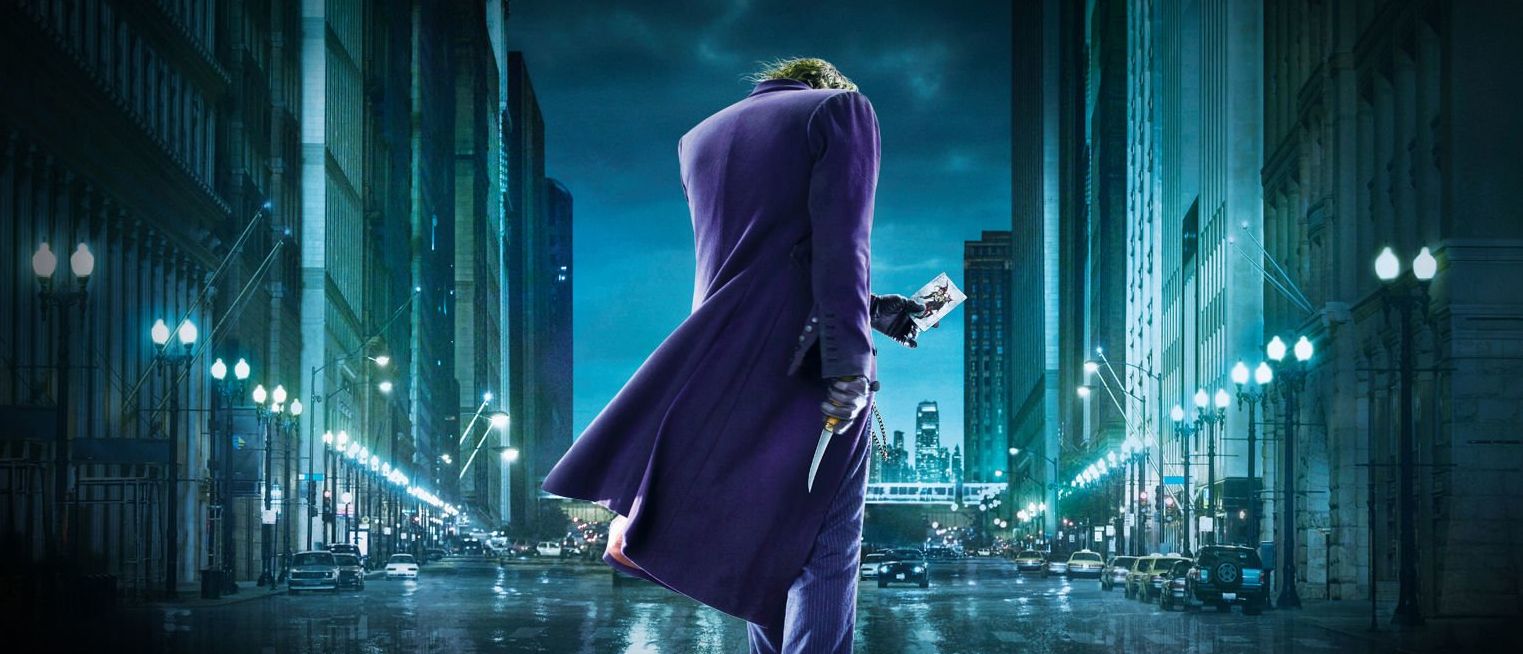
Batman and Bane’s final battle in Rises is rather stagnant, rather than epic as was quite rightly intended. That’s a shame because the midpoint confrontation between the two, absent of any of Hans Zimmer’s booming score, is brutal and effective. So too, can sequences such as the chase through the underground highway in The Dark Knight be hard to follow. The screen is frequently busy, and the editing isn’t always spot on. But I think that, while essential, and despite the above they are at times impressive, the action is very much in service to the themes that Nolan wants to explore. Much has been said of Rises’ historical nature, and it's themes of class warfare and the terrorist-like organization of a mercenary such as Bane. So too, about the societal ramifications of a chaotic entity such as the Joker in The Dark Knight. These are the things that keep us genuinely hooked, themes that define the tone of each film. It ensures that the trilogy as a whole will endure, because not one of them feels dependent on the other.
In The Dark Knight, the relationship between Batman and the Joker is, by the end of their battle, defined by its endlessness, putting forward the notion that neither can take out the other. The movie has to avoid that feeling of open-endedness, and that’s why it so effectively closes not with the Joker but with Harvey Dent. The Dark Knight Rises, and also Batman Begins, doesn’t have this problem. Both films, aided of course by having the same antagonist in a sense, are lead by villains that have an endgame. That promises conclusion, something concrete. The Dark Knight, in that sense, is the more thematic, more symbolic of the three films. It speaks more about the character of Batman, about what he can endure and about the things that hold him back. Sandwiched between two films more committed to Bruce Wayne than Batman, The Dark Knight can be associated with as the most iconic Batman in the trilogy, the one that defines him most effectively when stripped of his Bruce Wayne persona.
Where Batman Begins defines the reasons for Bruce Wayne’s choices in becoming the Batman, and where The Dark Knight forces Batman to consider his limits and what he can and can’t endure, The Dark Knight Rises is a final statement on the character’s ability to overcome enormous obstacles. More-so than either of the other two films, Rises is riddled with narrative gaps as it breathlessly bounds from one character to another, and one moment to the next, but it’s an enthralling piece of fiction set up on a stage that’s familiar to the world we live in now. Each film feels like an entry in a different genre, linked by a rich narrative about a young man dealing with his own demons and trauma. Hans Zimmer’s soundtrack carries us into the credits, and one of the great modern trilogies comes to a satisfying, finite conclusion.
The Dark Knight Trilogy feels like a piece of mythology, a timeless tale about a man who overcomes his fear, and it in essence defines its hero and what it means to be the Batman against the backdrop of a contemporary world that mirrors our own.
All this week I'm counting down to the release of Dunkirk. See below for the articles posted so far. Hope you enjoy.
